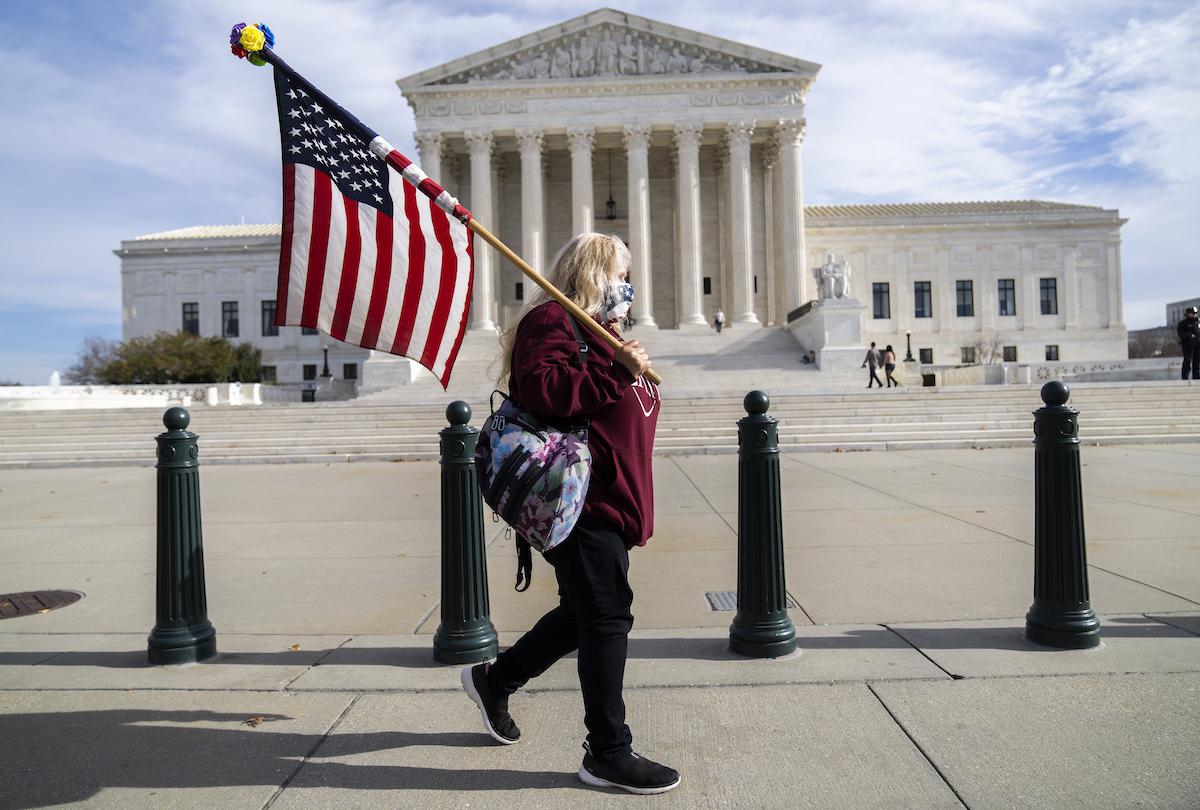Earlier this month the U.S. Supreme Court heard oral arguments in the case of Carson v. Makin. The appellants in this case, co-represented by the Institute for Justice and my firm First Liberty Institute, are parents and students in Maine who have been denied a state benefit available to residents of rural areas unable to support publicly funded secondary schools. Families in these areas generally receive state assistance to offset the cost of public or private schooling in other communities, but our clients have been denied access to funding because the schools to which they want to send their children are religious schools. The outcome of this case could put to rest an incoherent distinction in constitutional jurisprudence between religious status and religious use in similar cases. It could also clearly lay the legal groundwork for the eradication of state constitutional provisions known collectively as “Blaine Amendments,” an unconstitutional vestige of anti-Catholic bigotry. A decision for our clients would clarify a clouded area of First Amendment jurisprudence and free local debate surrounding failing school districts, school choice, and other related issues.
Oddly, Maine does not actually have a Blaine Amendment to its state constitution, so this case will not and cannot directly find these provisions to be unconstitutional. But understanding the implications of Carson v. Makin requires an understanding of the history and purpose of these state constitutional provisions.
The Historical Context
By 1870 all the states in the U.S. had publicly funded elementary schools and momentum was gaining slowly to make sure that every student in the country had access to ever increasing levels of education. The nation was also overwhelmingly Protestant. Many immigrants to the U.S. during this period hailed from majority Catholic nations like Ireland, Italy, and the Catholic regions of Germany. A rise in suspicion of and bias against these immigrants fueled a latent national suspicion of Roman Catholics. It is in this context that Representative (later Senator) James G. Blaine of Maine proposed what would have been the 16th Amendment to the U.S. Constitution. The proposed amendment, which did manage to pass the United States House of Representatives, read:
No State shall make any law respecting an establishment of religion, or prohibiting the free exercise thereof; and no money raised by taxation in any State for the support of public schools, or derived from any public fund therefor, nor any public lands devoted thereto, shall ever be under the control of any religious sect; nor shall any money so raised or lands so devoted be divided between religious sects or denominations.
The Blaine Amendment was written not to guarantee secular public schools in the way that “secular” would be understood today, but to maintain Protestant hegemony in the moral and religious content of publicly funded schools. Although it did not ultimately become enshrined in the Constitution, in the years following several states adopted similar provisions in their own constitutions, and in 2020, 37 states still had some version of a Blaine Amendment in force. As anti-Catholic bigotry began to wane and Protestant social and cultural influence gave way to a more pluralistic society, these provisions have morphed into roadblocks to attempts to address a lack of educational choice and sometimes even a lack of educational options. The funding of voucher programs, charter schools, and other programs are often complicated by the existence of these provisions, and there has long been wide recognition that at the state level these provisions conflict with the U.S. Constitution, given that in certain circumstances they bar funding that would otherwise be available to a school merely because of the religious identity of the institution.
Carson v. Makin
The origin of Carson v. Makin rests in a scheme that is more than 150 years old, promulgated for the State of Maine to solve the problem of providing state-funded secondary education to all students. Communities unable to support an independent secondary school have several options for providing this education, including providing funding for students to attend approved secondary schools that are public or private. Until 1980 this could include any school, but the Maine attorney general determined that providing funding to religious schools on behalf of these families violated the U.S. Constitution, and the state legislature amended the law to deny funding for education at otherwise acceptable schools merely because they were religious schools.
The Legal Landscape
The Maine scheme has been challenged before, but to no avail. In 2004, in a case styled Locke v. Davey, the Supreme Court upheld a Washington state law that barred students from participating in a publicly funded scholarship program otherwise available to them but for the fact that they were studying theology. In Locke the Court found that the law survived constitutional scrutiny because it did not discriminate on the basis of religious status. Students of all faiths could qualify for the aid with the one caveat: that the scholarship could not be applied to a degree program in “devotional theology,” a use that the Court deemed to be “religious.” After Locke it appeared that there was no easy path forward to challenge the exclusion of religious schools from the Maine funding scheme. Even on its way to the Supreme Court in this case, the federal appeals court relied upon the religious status/use distinction at the heart of Locke to uphold the law.
The past five years, however, have seen two cases decided by the Court that open the door to a fresh challenge to the Maine law. In 2017 the Court in Trinity Lutheran v. Comer found that the exclusion of a church-sponsored day care from participation in a state program for improving playgrounds was constitutionally impermissible because the denial of a grant was based on “what it is—a church.” Trinity Lutheran Church was, in the words of the Court, “put to the choice between being a church and receiving a government benefit.” In 2020 the Court held in Espinoza v. Montana Department of Revenue that exclusion of religious elementary and secondary schools from the list of approved educational institutions for families to use state-sponsored scholarships constituted impermissible religious discrimination.
The Case Before the Court
While none of these cases expressly invalidated or affirmed any specific Blaine Amendment, the cases read together have had the net effect of significantly undermining them, because the Court has clearly stated that discrimination on the basis of religious status will not stand up to the most rigorous constitutional scrutiny. On that same reasoning, it is very likely that the Maine families who are challenging the Maine funding scheme will win the right to direct the state funds to any school of their choosing despite the school’s religious identity. But the way in which they win, however, will determine the extent of the wider impact of the case.
There are a few possible favorable outcomes for the parents challenging the law. First, the Court could in some way abolish the religious status vs. religious use dichotomy relied upon by the federal appeals court in upholding the Maine scheme. Such an outcome in this case would likely be and should be quite narrow. As I have discussed earlier, the abolition of the status/use dichotomy in this type of case opens a whole world of questions that are simply unanswerable by any court. Second, the Court could conceivably hold that the Maine scheme represents a case of religious use of state funds, but that religious use does not violate the Constitution. This outcome is improbable, especially because the facts and subject matter of this case do not leave much space for the Court to provide much guidance for more broad applicability. The use of the funds in Carson is much more analogous to the use of funds in Trinity Lutheran and Espinoza, in that the funds are not to be for an “essentially religious endeavor.” Third, the Court could leave intact the status/use dichotomy and find, consistent with both Trinity Lutheran and Espinoza, that the use of funds in the Maine scheme does not constitute religious use.
The least dangerous branch has also proved to be the most unpredictable and mercurial. The inner workings of the deliberative process and the negotiating between justices are sources of much speculation, so it is difficult to say which of the possible outcomes is most likely. But it does appear that by the end of the term that all Maine parents and students will be able to benefit equally from the secondary school funding scheme, and it is quite possible that the ground work for overturning state constitutional provisions allowing for religious discrimination will have been laid.

